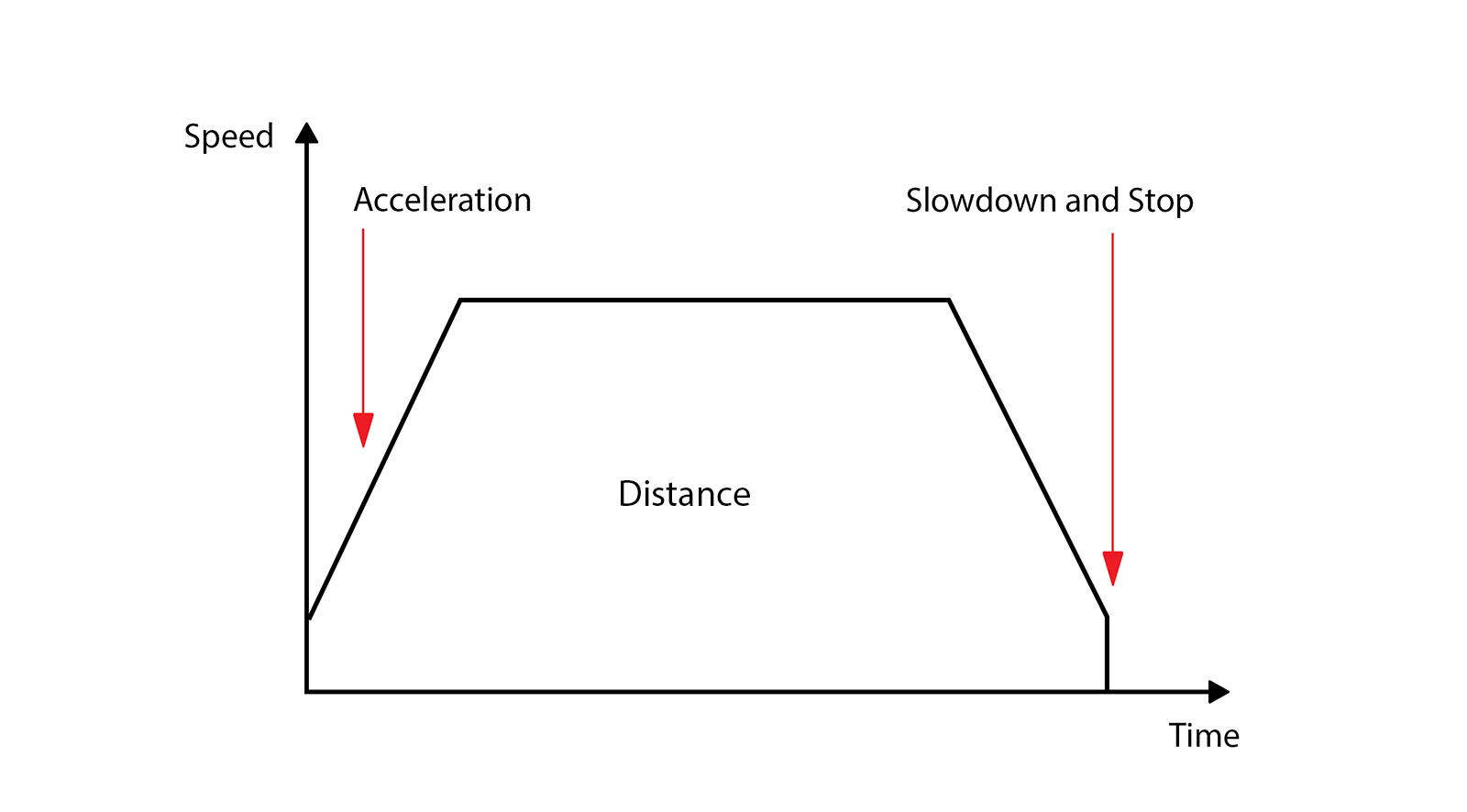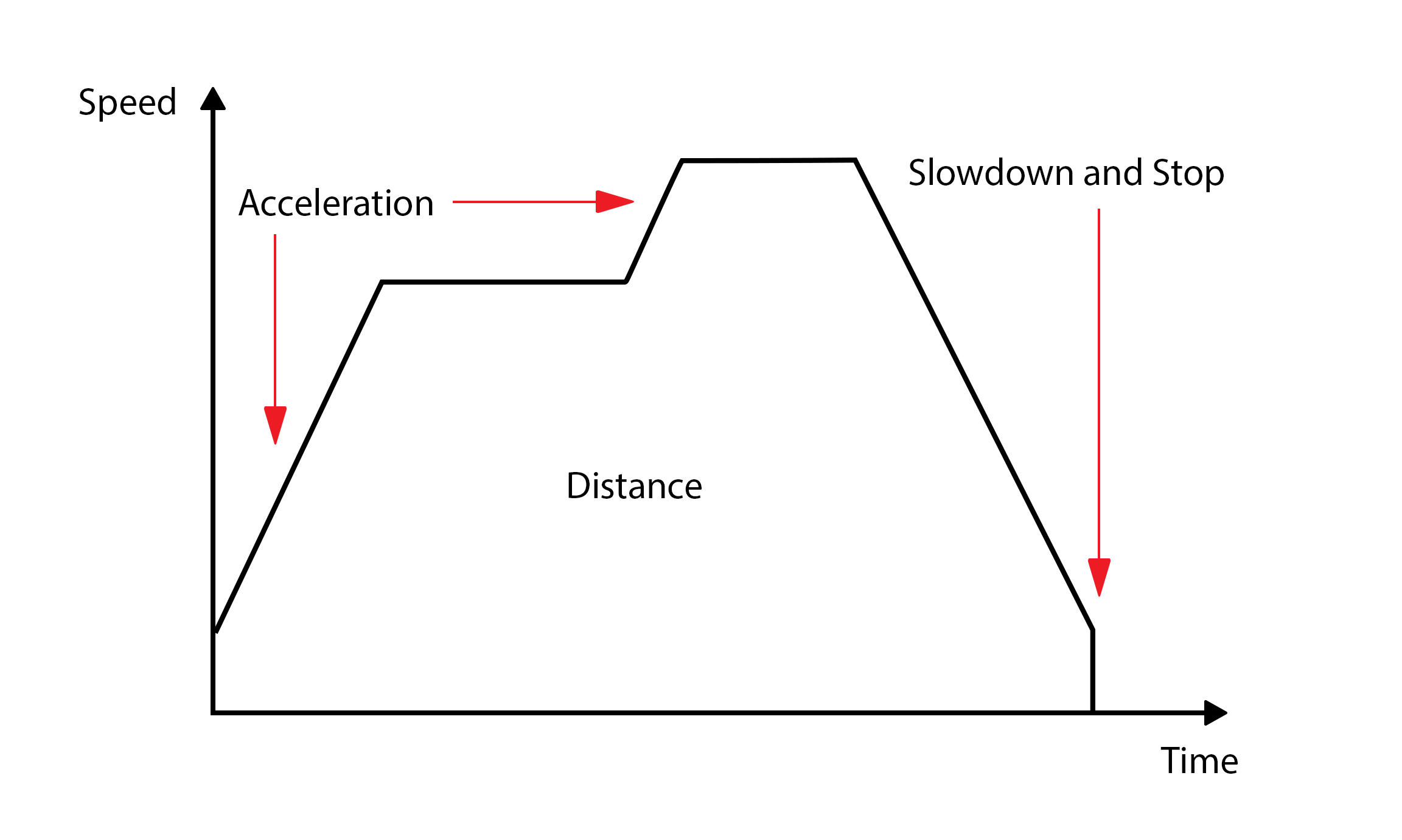Motion Control Basics: What is a Motion Profile?
By Jerame Chamberlain and Allie Kuester
A motion profile is a two-dimensional visual plot of the operation of a motor. Typically, it is plotted as a trapezoid, where time is the base and speed is represented by the height; the trapezoid’s sides are the rate of acceleration, and the area of the trapezoid is distance. This makes it easy to use geometry to solve all unknown values.

Linear acceleration is most common. In our trapezoidal representation, the left-hand side indicates the acceleration of the motion, and the top represents the top speed. When the right side slopes back downward, it is representative of the deceleration of the motor after the operation is complete.
One downside to linear acceleration is that if your workpiece or equipment is delicate, the “corners” of the trapezoid will not provide smooth movement, but rather there will be a slight jerk in the motion whenever the speed changes. It is possible to reduce the jerk by using gentler S-curve acceleration. Be aware, however, that S-curve acceleration requires the motor to output more peak power than a linear profile, when the time for acceleration is the same.
For more complex moves, blended profiles can be created that accelerate to one speed, run at that initial speed for a time, then accelerate to a higher speed, traverse some additional amount of time, and then slow down and stop. All sorts of combinations can be derived based on the needs of the motion profile of the application.

You will want to ensure your motion controller is capable of your chosen method of acceleration. To learn more about the basics of acceleration and deceleration control, check out another of our whitepapers: Using a Dedicated Pulse Control LSI vs. CPU for Motion Control.
